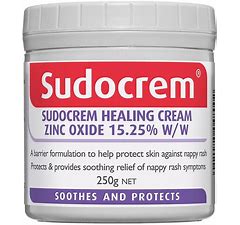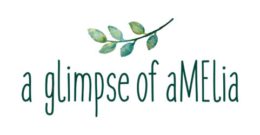Zinc Oxide= One of safest ingredient to use in a cream according to the EWG- Environmental Working Group. They class it as a number 2 health hazard. Zinc Oxide is an inorganic oxide used as a colorant and sunscreen agent. Possible human respiratory toxicant- only applicable if in a spray, lotions creams not cause an issue. Less than 0.01% skin penetration in human volunteers. Not assessed for safety in cosmetics by CIR. Zinc oxide, like most powders, can be a health risk if inhaled, but this is not a concern with creams and lotions. According to the EWG One or more animal studies show its classified as toxic at moderate doses (low dose studies may be unavailable for this ingredient) it creates an barrier between the skins and nappy. Zinc oxide works as a mild astringent and has some antiseptic properties. zinc oxide is an astringent which reduces the loss of tissue fluid. Human study showed about 0.4% of zinc oxide penetrated to bloodstream. Zinc found to be bioaccumulative in Arctic seabirds.
Benzyl Alcohol= Benzyl alcohol is a weak local anaesthetic which acts to ease localised pain and irritation. It also acts as a disinfectant/antibacterial agent and is responsible for protection against common bacterial contaminants.
Benzyl Benzoate= Benzyl benzoate is found in a variety of different essential oils. When it is not found in an essential oil, it can also be found in its synthetic form in perfumes, artificial flavourings, and preservatives. … i have no doubt this would be synthetic. Best avoided. Associated with endocrine disrupters. Not assessed for safety in cosmetics CIR. Petroleum derived. Effects on the nervous system.
Benzyl Cinnamate= Ester of benzyl alcohol and cinnamic acid. Petroleum derived. May cause skin irritation and allergic reaction for sensitive people. Not assessed for safety in cosmetics by CIR. Possible effects on the nervous system.
Lanolin= Animal derived from the oil glands of sheep. Synthetic lanolin can aggravate acne. Safe as used up to 37% in product. Suspected immunotoxicity. Irritation.
Purified Water= A solvent for ingredients that do not like to disolve in water. Usualy number one onthe ingredients list so it makes up a majority of the product. The water used in cosmetics is purified and deionized. (it means that almost all the mineral ions inside are removed) This way products can stay more stable over time.
Liquid Paraffin=
Liquid paraffin, also known as paraffinum liquidum or Russian mineral oil, is a very highly refined mineral oil used in cosmetics and medicine. Cosmetic or medicinal liquid paraffin should not be confused with the paraffin (or kerosene) used as a fuel. It is transparent, colourless, nearly odorless, and oily and is composed of saturated hydrocarbons derived from petroleum also known as Alkanes. Alkanes are the basis of petroleum fuels. Mineral oil is an occlusive emollient, meaning that it helps to keep your skin hydrated by locking in moisture by forming a barrier on your skin’s surface. Mineral oil and petroleum jelly are both byproducts of petroleum refinement and both are considered petrochemicals. It’s gone through a purification processes to remove contaminants and impurities. Mineral oil is a liquid byproduct of the distillation of petroleum to produce petrol and other petroleum-based products from crude oil. Mineral oil is mostly used because it it very stable and has a long shelf life, unlike natural oils which can go rancid and create potentially irritant compounds. The refinement process serves to remove harmful impurities and carcinogens associated with petroleum or lesser-grade mineral oils. (Or so I have read) Mineral oil is one of those ingredients that sits on top of your skin as the molecules are too big to be absorbed into it. “It produces an occlusive layer, preventing water loss, which keeps skin hydrated and protects it against irritation from outside sources. It can go by several names.
- Liquid paraffin
- Russian Mineral oil
- Paraffin oil
- Paraffinum liquidum
- Petrolatum, liquid
- White mineral oil
Mineral oils are complex mixtures of straight- and branched- chain paraffinic (Branched-chain paraffins have a much higher octane number rating than straight-chain paraffins) naphthenic ( widely present in crude oil) and aromatic hydrocarbons. (It lost me at this point!)
Paraffin Wax= Paraffin wax is a white or colorless soft, solid wax. It’s made from saturated hydrocarbons. It’s often used in skin-softening salon and spa treatments on the hands, cuticles, and feet because it’s colorless, tasteless, and odorless. It can also be used to provide pain relief to sore joints and muscles. Paraffin wax has many other uses, too. It’s often used as lubrication, electrical insulation, and to make candles and crayons. Cosmetically, paraffin wax is often applied to the hands and feet. The wax is a natural emollient, helping make skin supple and soft. When applied to the skin, it adds moisture and continues to boost the moisture levels of the skin. Paraffin is overall not good for the skin.
Microcrystalline Wax= Microcrystalline waxes are a type of wax produced by de oiling petrolatum, as part of the petroleum refining process. Plastic-type, highly refined wax derived from petroleum and purified for use in cosmetics. Used as a thickener and to give products a semi-solid to solid smooth texture. Typical microcrystalline wax crystal structure is small and thin, making them more flexible than paraffin wax. It is also more elastic than other waxes and has a higher melting point. It is used in cosmetics and beauty products as a viscosity agent, binder and emollient. It is considered safe for use in these products.
Synthetic Beeswax= Synthetic beeswax is a wax synthetically derived to be generally indistinguishable from natural beeswax with regard to composition and properties. Synthetic beeswax is made by blending a mixture of fatty acid esters, fatty acids, and alcohols together to achieve a consistency similar to natural beeswax. It can be found in cosmetics, skin care, hair products, and even some household items. There does not appear to be a set formula or ingredient list for synthetic beeswax. There are many different formulas and variations out there. Most synthetic beeswax is made without of the use of animal ingredients. And, originally, the goal was to create a wax similar to beeswax without the use of any animal or animal-derived ingredients. Suspected to be an environmental toxin.
Sorbitan Sesquiolate= Is a sorbitanfatty acid ester derived from a mix of mono- and di-esters of oleic acid and hexitol anhydrides of sorbitol. It is an oil-soluble water-dispersible non-ionic surfactant that functions as a water-in-oil emulsifier. Minimal to mild skin irritants.
Propylene Glycol= It is used to absorb extra water and maintain moisture in certain medicines, cosmetics, or food products. It is a synthetic liquid substance that absorbs water. It is labeled an organic compound in chemistry due to its carbon attributes.
Linalyl Acetate= Chemically, it is the acetate ester of linalool. Synthetic, caution advised, skin irritation, allergic reaction, hypersensitivity. Linalyl acetate is a naturally occurring phytochemical found in many flowers and spice plants. It is one of the principal components of the essential oils of bergamot and lavender. Chemically, it is the acetate ester of linalool, and the two often occur in conjunction.
Lavendar Oil/lavender fragrance= Adulteration of
lavender oils is primarily with lavandin oils and its fractions (as it is so much cheaper, being produced in at least a ten-fold excess), but other synthetic and natural fractions occur. Adulterants include: acetylated lavandin, synthetic
linalool and linalyl acetate, (as above)
Some alternatives to this producti recommend are: ( I would also choose organic for babies?childrens nappy area)
Some alternatives to this product could be:
Making your own baby balm with zinc oxide.
@Onea nappy balm Organic
@willowbythesea Organic
@natureschildorganics Organic
@Bubba Organics lavender nappy cream
@ecostoreau nappy balm
@DrBronners organic magic balm
Solid organic coconut oil Organic
@Weleda The Weleda calendula nappy balm, whilst very low tox, does contain Benzyl Salicylate which is a known Endocrine disruptor. Germany


